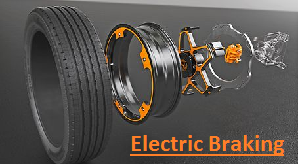Single Core Under Ground cable
Under Ground Cables
An Under Ground Cables essentially consists of one or more conductors covered with suitable insulation and surrounded by a protecting cover. Under Ground Cables are used, where it is impractical to use overhead line such as, thickly populated area, Railway crossings, Plants and substations, Connection to equipment from switch board.
Classification of Cables according to their Service:
- Single core
- two core
- three core
- Four core
For a 3 phase service, either 3 single core cables or three core cable can be used depending upon their operating voltage and load demand.
Single Core Under Ground cable:

- The cable has ordinary construction because the stresses developed in the cable for low voltages (up to 6600 V) are generally small.
- It consists of one circular core of tinned stranded copper (or aluminum) insulated by layers of impregnated paper.
- The insulation is surrounded by a lead sheath which prevents the entry of moisture into the inner parts. In order to protect the lead sheath from corrosion, an overall serving of compounded fibrous material (jute etc.) is provided.
- Single-core cables are not usually armoured in order to avoid excessive sheath losses. The principal advantages of single-core cables are simple construction and availability of larger copper section.



Recent Comments